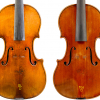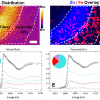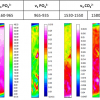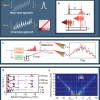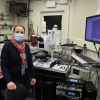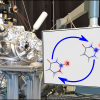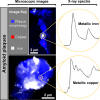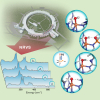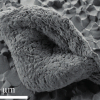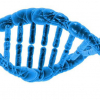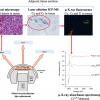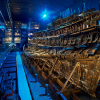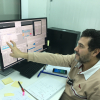Focus on Synchrotron
IR s-SNOM has shown that the layer between the wood and varnish of two Stradivarius violins contained protein-based compounds, congregating in nano-sized patches.
At BESSY II, Auger photoelectron coincidence spectroscopy (APECS) can be used to precisely determine the localisation of d electrons in cobalt compared to nickel and copper.
This article describes the use of synchrotron X-ray fluorescence and absorption spectroscopies to image metals in the brain.
Synchrotron FT-IR microspectroscopy has been used to study the side effects of typical tooth whitening treatments, based on oxidation, compared to a new treatment developed by the authors through reduction.
New work demonstrates transient non-linear spectroscopy based on covariance methods and its advantages over mean-value-based approaches. A generalisation of this approach could be a game change in non-linear spectroscopy in the optical region.
A Memorandum of Understanding for technical and scientific collaboration will strengthen ties, enhance agricultural research and encourage new technology development.
Synchrotron light is being used with FT-IR imaging to investigate the role of myelin in brain ageing.
A research team has used x-ray photoelectron spectroscopy to observe charge motions in light-excited molecules of thiouracil, a modified nucleobase.
For the first time, researchers have studied the behaviour of a catalyst for water electrolysis at the atomic level.
An international team of researchers has discovered elemental metallic copper and iron in the human brain for the first time.
X-ray photon correlation spectroscopy has been used to reveal the protein dynamics in egg white as it is heated.
Pfeiffer Vacuum has supplied a number of vacuum pumps and other products for Brazil’s synchrotron.
Curling wands and flat irons can damage the keratin proteins that make up about 85% of our hair, now the process can be observed as it happens with synchrotron vacuum-UV radiation.
A major advance in brain tumour diagnosis made by a research team from UK institutions using infrared spectroscopy at Diamond is highlighted in a short video.
Professor Peter Lay from the University of Sydney has been awarded the Australian Synchrotron Lifetime Contribution Award by ANSTO, the Australian Nuclear Science and Technology Organisation.
Synchrotron infrared nanospectroscopy has been used for the first time to measure biomolecular changes induced by a drug (amiodarone) within human cells (macrophages) and localised at 100 nm scale, i.e. two orders of magnitude smaller than the IR wavelength used as probe.
The presence of kaolinite haloes surrounding ancient fossils is believed to have kept destructive bacteria at bay, stopping decay. The small molecular differences of the clay were analysed with the synchrotron infrared microbeam at Diamond Light Source.
The synchrotron radiation-based technique, 57Fe nuclear resonance vibrational spectroscopy, has been used to probe the hydrogen bonds that modulate the chemical reactivity of enzymes, catalysts and biomimetic complexes.
Using spectroscopic techniques including Raman and XANES, 3.4 billion year old microfossils from Western Australia’s Strelley Pool formation have been shown to be chemically similar to modern bacteria. This all but confirms the biological origins of the fossils and ranks them among the world’s oldest.
A study recently conducted at the circular dichroism beamline (B23) at Diamond Light Source could pave the way for a new forensic DNA profiling technique.
Synchrotron analysis using X-ray spectroscopies shows potentially harmful metals from implants can find their way into human organs.
A combination of synchrotron techniques at the UK’s Diamond Light Source is being used to research the effect of conservation choices on corrosion of iron cannonballs from the Tudor warship, Mary Rose.
The SESAME light source in Jordan has seen First Monochromatic Light through the XAFS/XRF spectroscopy beamline.
Nati Salvadó, Salvador Butí and Trinitat Pradell have used a number of techniques to investigate changes in pictorial techniques in Catalan paintings in the 15th century. The combination of different techniques is of particular value. The use of synchtrotron radiation as a light source is also an advantage.
This article highlights four areas of research where the use of tunable synchrotron radiation radiation in the vacuum-UV has led to important discoveries. These studies have exploited the tunability of such sources, albeit at moderate resolution.
Paul Dumas
LURE, centre Universitaire Paris Sud, BP 34, F-91898 Orsay Cédex, France
Mark J. Tobin
CCLRC Daresbury Laboratories, Warrington, Cheshire WA4 4AD, UK

